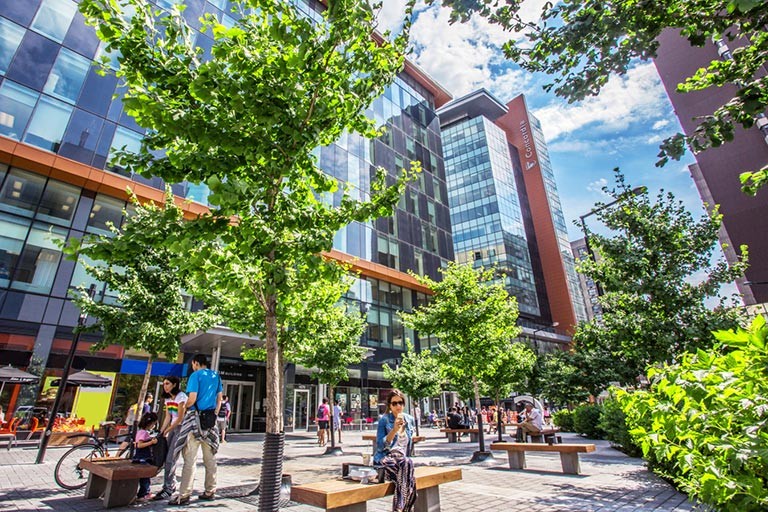From the groundbreaking to the seamless

The physical environment refers to many different aspects of the world around us, and at Concordia, it’s Facilities Management that makes sure all of these are up to date and the best that they can be. Whether it’s the best library and the best student bar, or the best air quality and the best power consumption, it’s all part of the same undertaking.
“We’re looking at all times to make sure everything that falls under the umbrella of Facilities is up to date, modern, and—if possible—on the cutting edge of technology,” says Michel Nadeau, associate vice-president of Facilities Management. “The university functions best in all realms when its facilities are working well. Students can maximize their learning experiences, staff can enjoy a more pleasant working environment, and the university itself can make a more positive physical impact in terms of environmental sustainability.”
Webster library renovations
In the past year, Facilities Management has seen the completion of projects that everyone on campus has noticed. Most notable among these was the completion of Phases I and II of the Webster Library renovation project.
“The project transforms the library from a traditional environment into a modern architectural space designed with more natural light, increased comfort, a variety in study spaces, and access to new technology,” says Kirsten Sutherland, interim director, project management, who says doubling the library’s seating capacity is a means to respond to the needs of a growing university.
“The spaces foster a healthy environment for students to immerse themselves in study and research. The offices for staff were consolidated in one area to allow for increased collaboration in an environment that was more open and transparent, while at the same time the design provided employees with new ways to engage with students through the use of consultation rooms, technology- enhanced classrooms, and dedicated graduate spaces.”
Beginning with the opening of Phase I on the eastern half of LB3 in September 2015, and continuing with Phase II’s renovation of LB5, which opened in March 2016, the Webster Library renovation is changing LB enormously. A total of 1,000 new seats have been opened across numerous closed reading rooms (one reserved for graduate students), a zero-noise room, group-study rooms and the dissertation writers’ rooms. And the new seats are connectible: the modern reality of library learning requires that students have access to power and internet wherever they need them.
“Overall, the spaces are more welcoming, comfortable and innovative for both staff and students, and align with modern ways of learning, researching and engaging with others,” Sutherland says.
Reggie’s makeover
Meanwhile, Reggie’s Pub has been given an equally striking makeover. Gone is the nearly windowless beer cavern that existed in that form for decades. In its place, a space defined by more windows, a brand new bar, modern fixtures, and a fully functional kitchen reopened last fall to a very positive response. Students find the new location more attractive, as did the International Store Design Competition, which lauded Reggie’s with a Best in Class award at the 52nd annual SPECS (Store Planning, Equipment, Construction and Facilities Services) 2016 seminar in Dallas, Texas.
Limiting power consumption
But some of the biggest changes wouldn’t have been perceived by the majority of those on campus at all—had Hydro Quebec not singled Concordia out for praise.
Following a proposal to Hydro Quebec, Concordia set out in 2015-2016 to begin strictly limiting its Hydro power consumption demands.
“What we were doing was limiting hydro consumption by using other sources of energy -- primarily gas -- which generated savings because it took pressure off the grid during peak times,” explains Pat Pietromonaco, senior director, property management. “Because of those successes, when Hydro Quebec was preparing to launch their Demand- Side Management program for 2016-17, they promoted it to different communities and people of interest by talking about the results of pilot projects that had been successful. So they asked Concordia if we would be willing to share our results and our experience with their potential future clients.”
If they hadn’t, Pietromonaco says, the initiative would have gone unnoticed, because the one of the goals of the consumption-limiting project was for the changes to be seamless.
“Whatever we’re doing doesn’t change. Throughout the project Concordians continued to enjoy the benefits of quiet systems, proper lighting, and good air quality—and that quality is being maintained while we use less consumption.”



